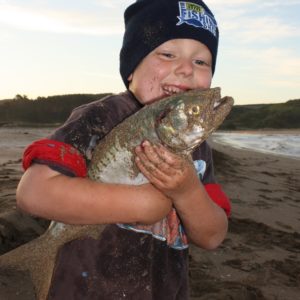Recreational fishers are celebrating the sixth anniversary of the Supreme Court ruling that changed the fisheries management landscape in New Zealand.
In a landmark decision in 2009, the Supreme Court confirmed the Minister for Primary Industries, Nathan Guy, can apply discretion and government policy when allocating the available fisheries resource between sectors.
“The Kahawai Legal Challenge Court judgment proved to us that the public can influence how our fish stocks are managed in the future, to make sure our children enjoy more abundant fisheries.”
Richard Baker, LegaSea spokesperson
Fresh management decisions for kahawai stocks were made in 2010 and more recently for snapper in Area 1, off the northeast coast of the North Island. Mr. Baker acknowledges recreational fishers did not immediately recognise and appreciate the positive ramifications of the kahawai and snapper decisions.
“Thousands of people submitted on kahawai and around 50,000 people responded to the snapper proposals in 2013. There was initial disappointment when the management decisions for these important fisheries were announced, but over time we have learned to live with the changes.”
“Both the kahawai and snapper Area 1 stocks are now rebuilding towards target levels set higher than in the past, in line with international best practice. Over time fish numbers and catch rates will increase and support high quality recreational and customary fishing.”

Mark Connor is LegaSea team leader and President of the New Zealand Sport Fishing Council, the organisation that spearheaded the Kahawai Legal Challenge between 2004 and 2009.
“It was new territory for us in 2004 to initiate a judicial review of the Minister’s kahawai decisions. A win in the High Court was a big boost for our Council and the public. Subsequent appeals clarified several points of law and overturned some of the earlier rulings.What remains unchanged is that the public has every opportunity to sway management decisions to increase abundance for the betterment of future generations.”
“The Council has invested much of its resources into developing a range of policies to achieve abundant fisheries. As an organisation representing over 32,000 members we are keen to raise public awareness of the importance of having thriving fisheries, for our members and future generations of New Zealand kids.
“It’s also important to educate people so they understand why we need to apply these policies to rebuild inshore ecosystems and safeguard against environmental threats”, continued Mr. Connor.
In 2012 the Council established LegaSea to increase public awareness and raise funds to achieve more abundant fisheries. LegaSea is currently fundraising for a project to value the economy of recreational fishing in New Zealand.
About the Kahawai Legal Challenge
Kahawai management has been highly contentious since purse seining was introduced in the 1970s. This species was left out of the Quota Management System in 1986 and commercial exploitation peaked in the late 1980s. In the early 1990s purse seine limits were imposed by the then Minister of Fisheries, Doug Kidd. The Minister sought to address ongoing concerns from the amateur fishing sector and the New Zealand Sport Fishing Council’s predecessor, the New Zealand Big Game Fishing Council.
In 2004 the Minister of Fisheries, David Benson-Pope, introduced kahawai into the Quota Management System and set catch limits at 15% below historic catch levels.
Kahawai was reviewed again in 2005 and catch limits were reduced by another 10%.
In a landmark case recreational fishers and northern Maori non-commercial interests challenged the Minister’s 2004 and 2005 decisions on kahawai quota and allowances in the High Court and won. Subsequent Court of Appeal and Supreme Court hearings clarified a number of contentious points of law and overturned some of the earlier rulings.
On 28 May 2009 the Supreme Court dismissed the appeal by the recreational parties, but clarified the Minister has wide discretion when providing for customary, recreational and commercial interests.
The Minister reviewed kahawai management in 2010. Over 1000 submissions were sent to the Minister. A fresh decision was made and applied from 1 October 2010, which retained the nationwide Total Allowable Commercial Catch at 2728 tonnes.
Results of a new stock assessment in Fisheries Management Area 1 (North Cape to Cape Runaway) will be released next month. It is likely to show that the kahawai stock has been rebuilding over recent years.
Kahawai management reviews 2004-12
http://www.option4.co.nz/kahawai/kahawai.htm
Kahawai management 2010-11
http://www.option4.co.nz/kahawai/kahawai2010.htm





